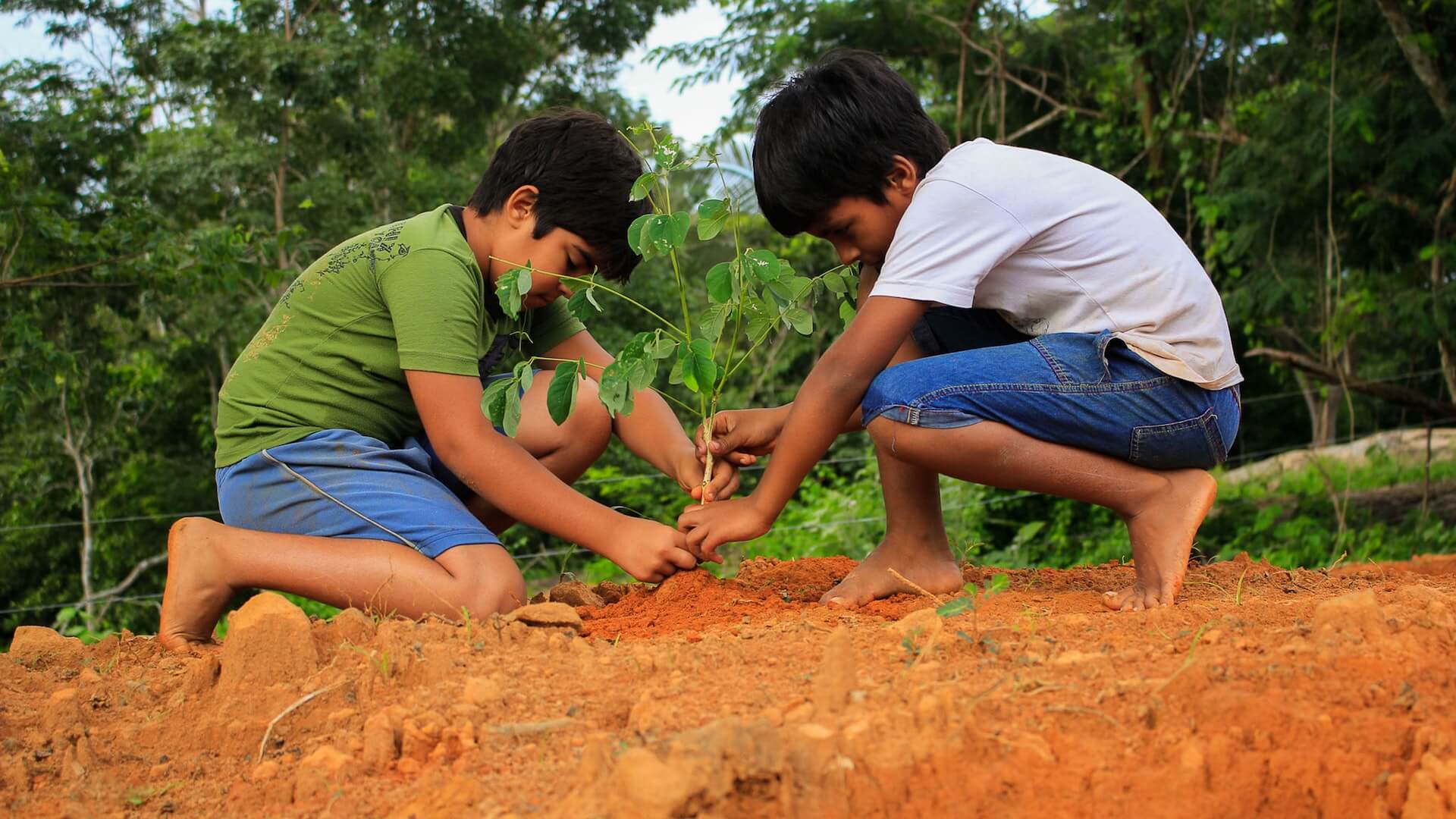We all want to live in a world that is healthy and thriving, but our actions today are impacting the environment in negative ways. From pollution to deforestation, our planet is facing serious challenges. It is our responsibility to take action and make changes to our lifestyles that will lead to a more sustainable future. Sustainable living means choosing to live in a way that meets our needs without compromising the ability of future generations to meet their own needs. In this post, we’ll provide practical tips on how to reduce your carbon footprint, waste less, and live a more environmentally friendly lifestyle. From choosing eco-friendly products to reducing your energy consumption and traveling sustainably, we’ll cover everything you need to know to make a positive impact on the planet and ensure a greener future for generations to come.
Introduction: The importance of sustainable living
In today’s world, the concept of sustainable living has gained significant attention and importance. As we become more aware of the environmental challenges we face, it is crucial to adopt practices that promote a greener future. Sustainable living encompasses a range of actions and choices that aim to minimize our negative impact on the planet and preserve its resources for future generations.

The importance of sustainable living cannot be overstated. Our current lifestyles, characterized by excessive consumption and waste, have led to alarming levels of pollution, deforestation, and carbon emissions. These practices are not only detrimental to the environment but also contribute to climate change and the depletion of natural resources.
By embracing sustainable living, we can actively contribute to mitigating these issues. It involves making conscious decisions about our daily habits, such as reducing energy consumption, minimizing waste generation, and opting for eco-friendly alternatives. These choices not only reduce our carbon footprint but also promote healthier and more fulfilling lives.
Moreover, sustainable living goes beyond individual actions. It involves advocating for systemic changes, supporting businesses and organizations that prioritize sustainability, and fostering a collective effort to create a greener future. Through education, awareness, and collaboration, we can create a positive ripple effect that influences others to adopt sustainable practices as well.
Reduce, Reuse, Recycle: Practical ways to minimize waste
One practical way to minimize waste is by reducing our consumption. This involves being mindful of our purchasing habits and opting for products with minimal packaging or packaging that is recyclable or biodegradable. Choosing products made from sustainable materials, such as bamboo or recycled materials, can also help reduce waste.
Another way to minimize waste is by reusing items whenever possible. Before discarding an item, consider if it can be repurposed or given a new life. For example, glass jars can be reused for storing food or as containers for DIY projects. Old clothes can be upcycled into new fashion pieces or donated to others in need.
Recycling is an essential part of waste reduction. Make sure to properly sort and dispose of recyclable materials, such as paper, plastic, glass, and metal. Familiarize yourself with your local recycling guidelines to ensure that you are recycling correctly. Additionally, consider composting organic waste, such as food scraps and yard trimmings, to reduce the amount of waste sent to landfills.
Energy conservation: Tips for reducing energy consumption at home
Energy conservation is not only beneficial for the environment but also for your wallet. By implementing simple practices to reduce energy consumption at home, you can contribute to a greener future while saving on your utility bills.

One of the easiest and most effective ways to conserve energy is by switching to energy-efficient lighting. Replace traditional incandescent bulbs with LED or CFL bulbs that use significantly less electricity and have a longer lifespan. Additionally, make it a habit to turn off lights when you leave a room or use natural lighting during the day.
Another area where you can make a significant impact is by managing your heating and cooling systems. During the colder months, set your thermostat to a lower temperature and wear warm clothing or use blankets to stay comfortable. In the summer, adjust your thermostat to a higher temperature and utilize fans or natural ventilation to cool your home. Installing a programmable thermostat can also help you optimize energy usage by automatically adjusting temperatures based on your schedule.
Appliances and electronics are major energy consumers. When purchasing new appliances, opt for energy-efficient models with high Energy Star ratings. Unplug electronics and chargers when not in use, as they can still draw power even in standby mode. Utilize power strips to easily turn off multiple devices at once to prevent unnecessary energy consumption.
Insulation plays a crucial role in keeping your home energy-efficient. Ensure that your walls, windows, and doors are properly sealed to minimize heat loss or gain. Adding insulation to your home, especially in the attic and walls, can significantly reduce energy usage and improve comfort.
Lastly, be mindful of your water usage. Install low-flow showerheads and faucets to conserve water, and fix any leaks promptly. Opt for efficient appliances like dishwashers and washing machines that use less water and energy.
Water conservation: Simple strategies for conserving water
By implementing simple strategies for conserving water in our daily lives, we can make a significant impact on reducing water waste and promoting a greener future.
One effective way to conserve water is by being mindful of our daily habits. Turning off the tap while brushing our teeth or lathering our hands can save gallons of water each day. Additionally, fixing leaky faucets and pipes promptly can prevent water wastage and contribute to water conservation efforts.
Another practical strategy is to opt for water-efficient appliances and fixtures. Upgrading to low-flow showerheads, toilets, and faucets can significantly reduce water consumption without compromising functionality. These eco-friendly alternatives use innovative designs to maintain water pressure while minimizing water usage.
Outdoor water usage is another area where conservation efforts can be implemented. Collecting rainwater in barrels or using drip irrigation systems can help nurture plants and gardens while minimizing water waste. Additionally, watering plants during cooler parts of the day, such as early morning or late evening, can prevent excessive evaporation and optimize water absorption.
Education and awareness play a vital role in water conservation. By spreading knowledge about the importance of water conservation and sharing practical tips, we can inspire others to adopt sustainable practices. Encouraging community initiatives, such as water-saving campaigns or workshops, can also foster a collective effort towards a greener future.
Sustainable transportation: How to reduce your carbon footprint
Reducing our carbon footprint is crucial for creating a sustainable future. One area where we can make a significant impact is in our transportation choices. By adopting sustainable transportation practices, we can contribute to a greener future while also enjoying the numerous benefits that come with it.
One practical tip for reducing your carbon footprint is to opt for alternative modes of transportation whenever possible. Consider walking or cycling for short distances instead of relying on a car. Not only will this help reduce emissions, but it will also improve your health and save you money on fuel costs.
If walking or cycling is not feasible for longer distances, consider using public transportation. Buses, trams, and trains are more fuel-efficient compared to individual cars, as they can transport a larger number of people at once. Additionally, many cities now offer bike-sharing programs or electric scooter rentals, providing convenient and eco-friendly options for short trips.
Another way to reduce your carbon footprint is by carpooling or car-sharing. Sharing a ride with friends, neighbors, or colleagues not only cuts down on emissions but also reduces traffic congestion. Additionally, car-sharing services allow you to access a vehicle only when needed, eliminating the need for individual car ownership.
For those who do own a car, choosing a fuel-efficient or hybrid vehicle can significantly reduce emissions. Electric vehicles (EVs) are also becoming increasingly popular, as they produce zero tailpipe emissions. Furthermore, with the expanding network of charging stations, EVs are becoming a more viable option for sustainable transportation.
Lastly, consider combining errands and planning your trips efficiently to minimize unnecessary driving. By optimizing your routes and consolidating your tasks, you can save both time and fuel. Additionally, consider telecommuting or working remotely when possible, as this eliminates the need for commuting altogether.
Food choices: Making sustainable food choices for a greener future
The food industry has a significant impact on the environment, from greenhouse gas emissions to deforestation and water pollution. By making conscious decisions about what we eat, we can contribute to a more sustainable future.

One of the first steps towards sustainable food choices is reducing meat consumption. Animal agriculture is a major contributor to greenhouse gas emissions and deforestation. Incorporating more plant-based meals into our diets can have a positive impact on the environment. This doesn’t mean you have to become a strict vegetarian or vegan, but rather embracing the concept of “Meatless Mondays” or exploring delicious plant-based alternatives.
Another important aspect of sustainable food choices is sourcing locally grown and seasonal produce. Buying local not only supports local farmers and the economy but also reduces the carbon footprint associated with transportation. Seasonal produce is fresher, tastier, and requires fewer resources to grow. Visiting farmers markets or joining a community-supported agriculture (CSA) program are great ways to access local and seasonal food options.
Additionally, reducing food waste is essential for sustainable living. Approximately one-third of all food produced globally is wasted. By planning meals, storing food properly, and composting, we can minimize waste and make the most of the resources used to produce food.
Considering the packaging and processing of the food we consume is also important. Opting for products with minimal packaging, choosing glass or reusable containers, and reducing processed foods can significantly reduce our environmental impact.
Educating ourselves about the impacts of our food choices and supporting sustainable farming practices is another way to contribute to a greener future. By seeking out information about organic farming, fair trade practices, and supporting local initiatives, we can make more informed decisions when it comes to our food.
Sustainable fashion: Tips for a more sustainable wardrobe
In today’s fast-paced fashion industry, it’s easy to get caught up in the trend cycle and constantly feel the need to update our wardrobes. However, this “throwaway” culture comes at a great cost to the environment. The production of clothing consumes valuable resources and releases harmful pollutants into the air and water.
Fortunately, there are practical steps we can take to make our wardrobes more sustainable. First and foremost, it’s important to prioritize quality over quantity. Investing in well-made, durable pieces that will last for years is the key to building a sustainable wardrobe. Look for brands that prioritize ethical production practices and use eco-friendly materials.
Another tip for sustainable fashion is to embrace second-hand shopping. Thrift stores, consignment shops, and online platforms offer a wide range of pre-loved clothing that is just waiting to be rediscovered. Not only does this help reduce waste, but it also allows you to find unique, one-of-a-kind pieces that add character to your wardrobe.
Additionally, consider implementing a “capsule wardrobe” approach. This involves creating a collection of versatile, timeless pieces that can be mixed and matched to create countless outfits. By curating a smaller, well-thought-out wardrobe, you can minimize the need for constant shopping and reduce the environmental impact of your fashion choices.
Eco-conscious consumers should also prioritize natural fibers over synthetic ones. Fabrics like organic cotton, linen, hemp, and bamboo are not only sustainable in their production but also biodegradable at the end of their lifecycle. Avoiding synthetic materials such as polyester and nylon, which are derived from non-renewable resources and release microplastics when washed, is another step towards a greener wardrobe.
Finally, remember that caring for your clothes properly can significantly extend their lifespan. Follow the care instructions provided by the manufacturer, mend and repair items when needed, and consider washing clothes less frequently to conserve water and energy.
Eco-conscious travel: How to minimize your impact while exploring the world
Traveling is a wonderful way to explore new places, learn about different cultures, and create unforgettable memories. However, it’s important to be mindful of the impact our travel choices have on the environment. By adopting eco-conscious practices while exploring the world, we can minimize our carbon footprint and contribute to a greener future.

One of the first steps you can take is to choose sustainable modes of transportation. Opting for trains, buses, or carpooling not only reduces greenhouse gas emissions but also allows you to experience the journey in a more relaxed and scenic manner. If flying is unavoidable, consider offsetting your carbon emissions by investing in certified carbon offset projects.
When selecting accommodations, prioritize eco-friendly options. Look for hotels or resorts that have implemented energy-saving measures, use renewable energy sources, have recycling programs, and promote water conservation. Alternatively, consider staying in eco-lodges, guesthouses, or even camping to immerse yourself in nature while minimizing your environmental impact.
Being mindful of your consumption habits while traveling is crucial. Avoid single-use plastics by carrying a reusable water bottle, utensils, and cloth bags. Support local businesses that prioritize sustainability, such as farm-to-table restaurants or shops that sell locally-made and organic products. By doing so, you not only reduce waste but also contribute to the local economy and culture.
Exploring natural landscapes and wildlife is a highlight of many trips. Ensure you do so responsibly by adhering to the principles of Leave No Trace. Stay on designated trails, avoid disturbing wildlife, and never remove natural souvenirs from their habitats. Additionally, seek out eco-tourism activities that prioritize conservation and support local communities.
Lastly, make an effort to educate yourself and others about the importance of sustainable travel. Share your experiences and tips on social media, start conversations with fellow travelers, and support organizations that work towards protecting the environment and promoting responsible tourism.
Conclusion
By implementing these tips into your daily life, you can make a significant positive impact on the environment and contribute to a more sustainable future. Remember, every small action counts, from reducing waste to conserving energy. Together, we can create a greener world for generations to come. Let’s make sustainability a way of life.




2 Comments